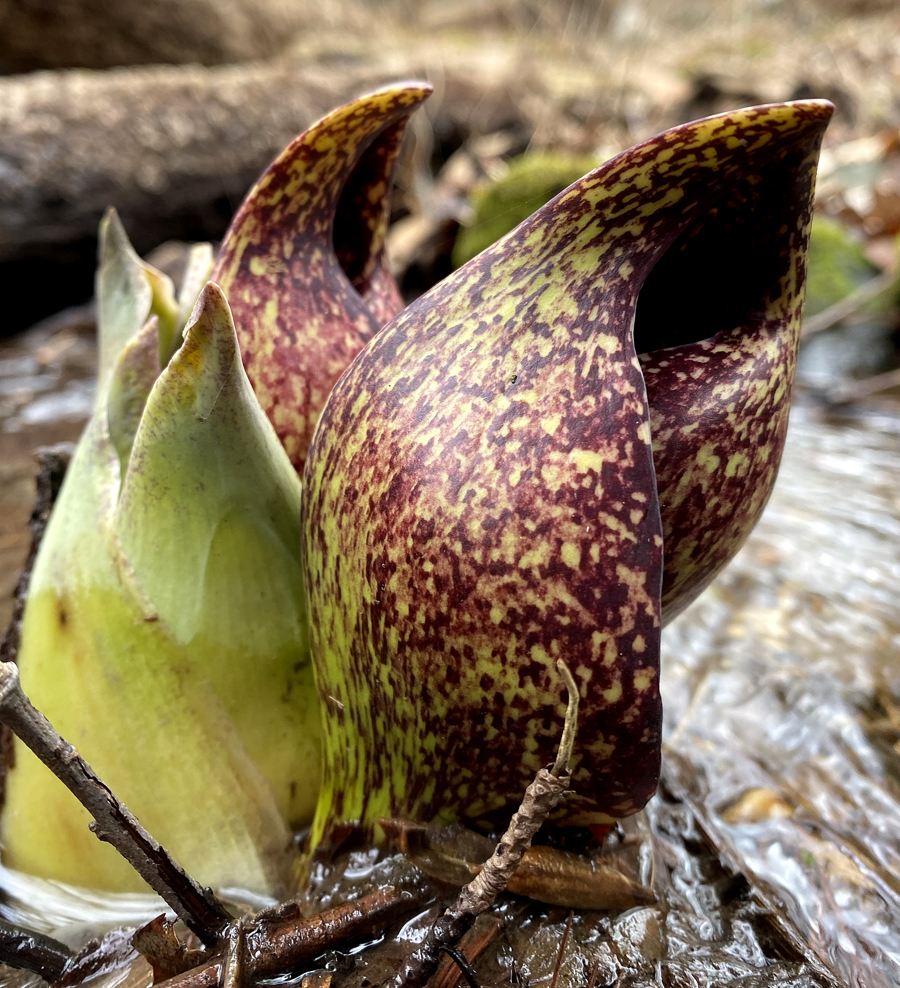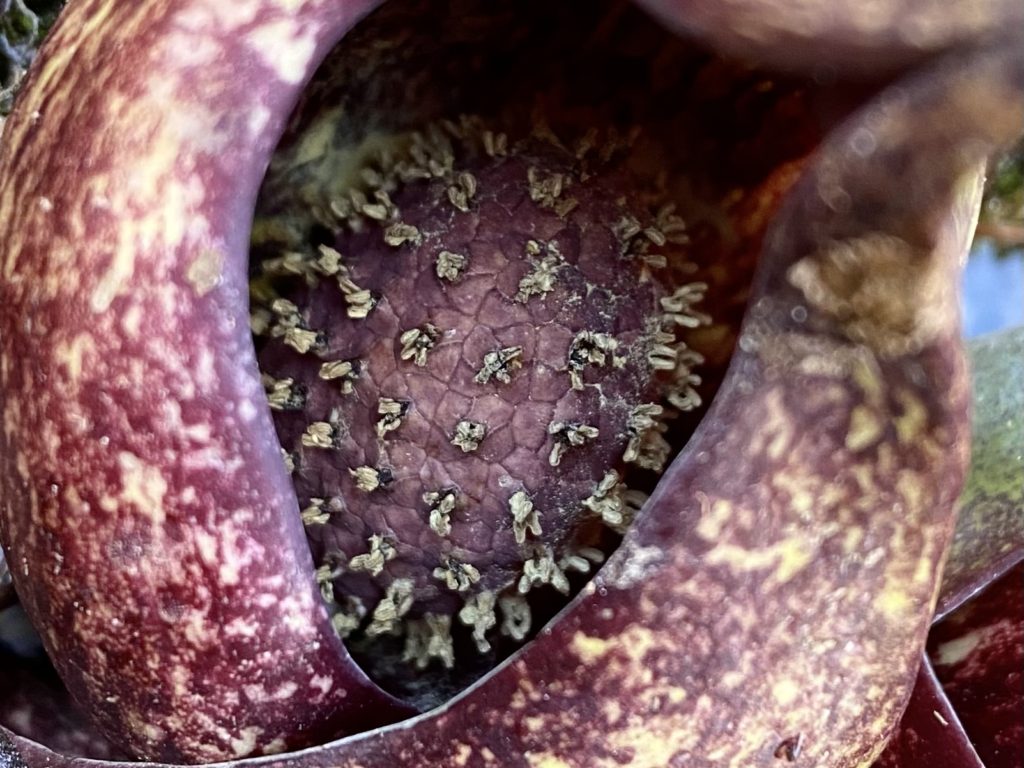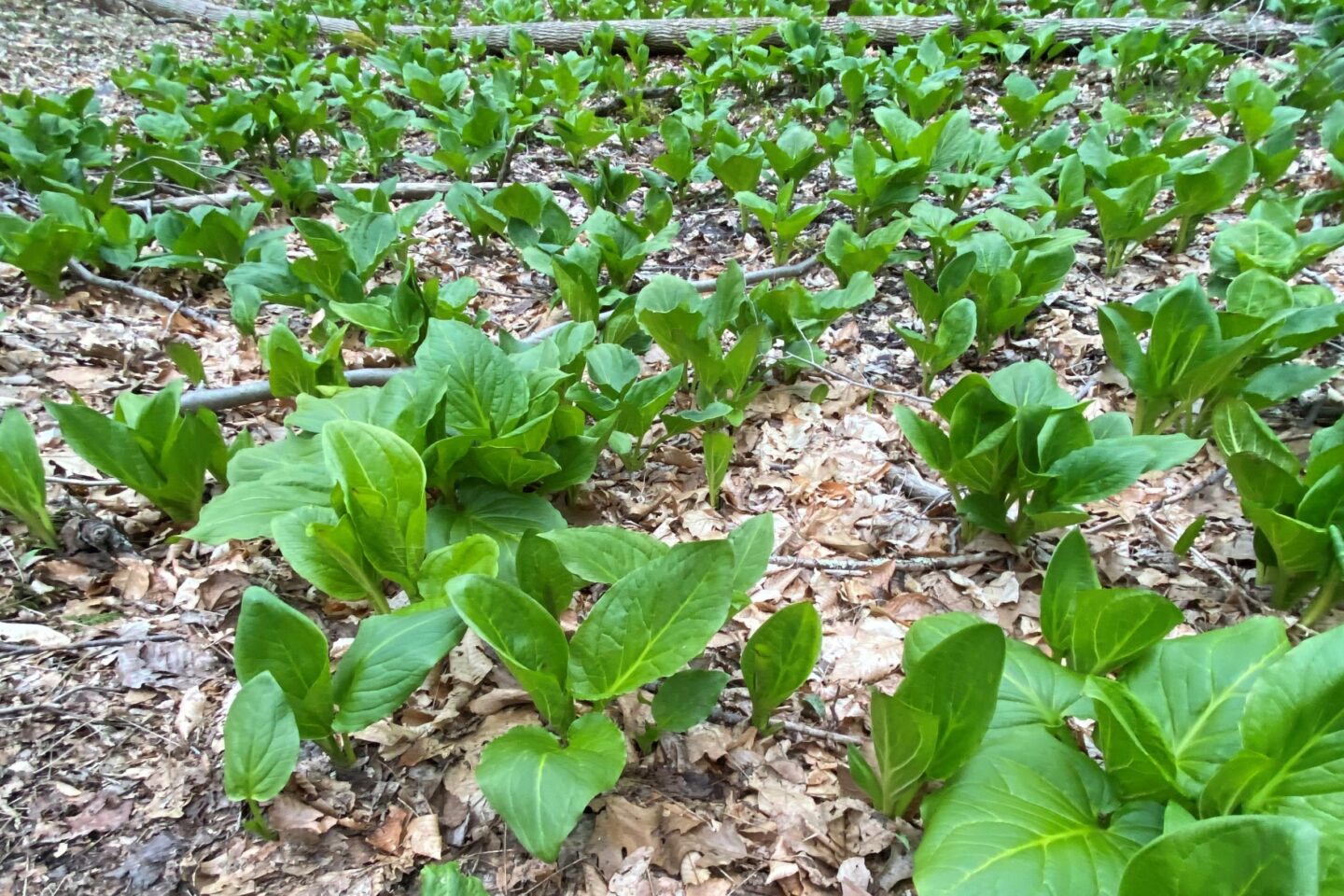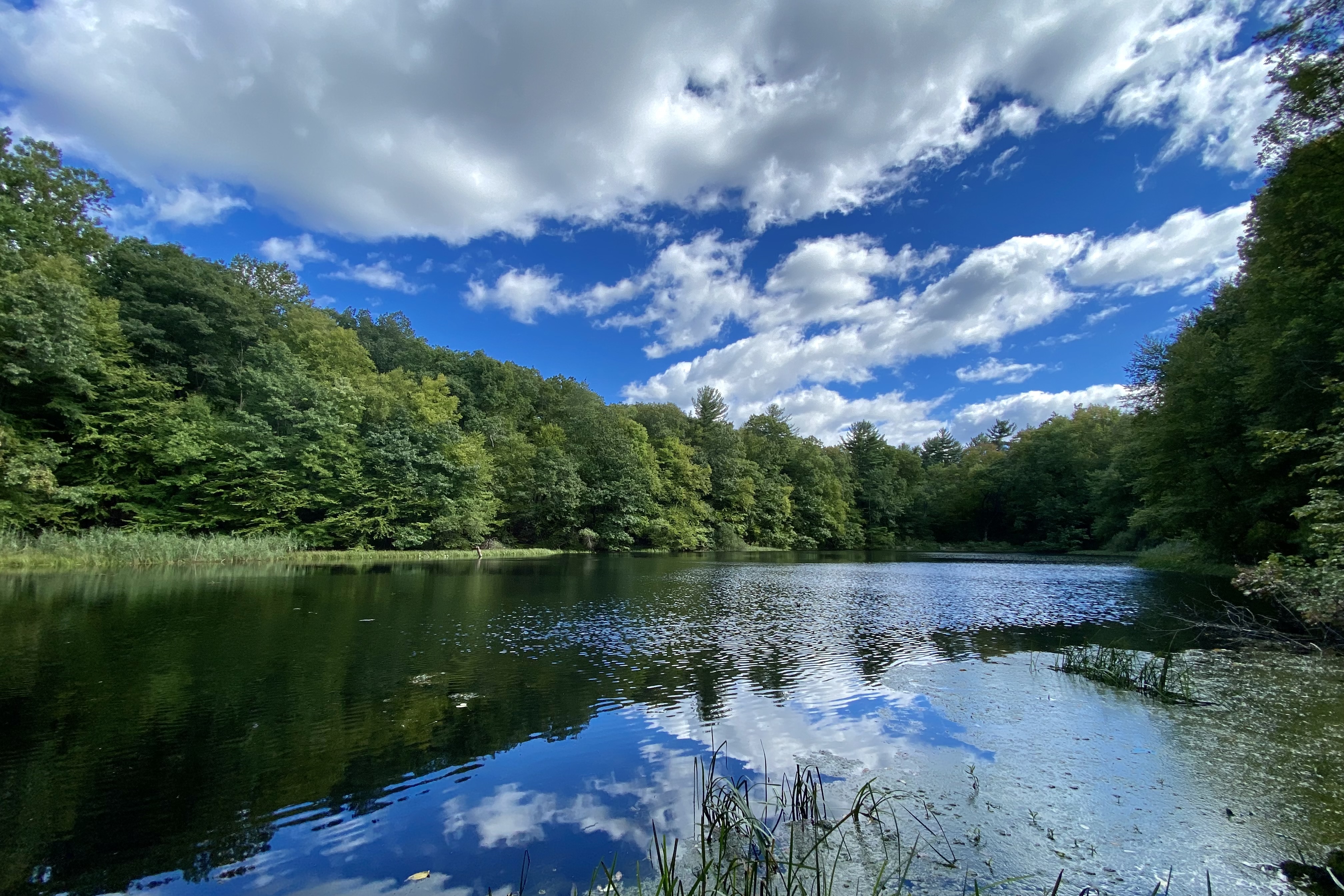Stranger Than Fiction: The Skunk Cabbage
Skunk cabbage is common in moist woodlands of the northeast, but it's a weirder plant than you probably realize.
A Ground-breaking Plant
In late winter each year, curious structures begin to break through the frozen ground of Northeastern North America’s moist woodlands. Patterned maroon and pale yellow, they look more like alien pods from a science-fiction movie than a plant native to the forests of New York. These hood-like structures are parts of the first wildflowers of spring, belonging to a plant called skunk cabbage (Symplocarpus foetidus). When it comes to skunk cabbage, the facts are stranger than fiction.
Skunk cabbage is able to flower so early in the year because it is a thermogenic plant, able to produce its own heat to melt through the frozen ground long before any other spring wildflowers begin to appear in our forests. This thermogenesis already sets the skunk cabbage apart from every other plant species found growing in the Sanctuary. The vast majority of plants globally are not thermogenic.

Early season skunk cabbage growth with the spathes to the right, and a green bud containing the future leaves to the left
Thermogenesis is most common in the plant family Araceae, the family in which skunk cabbage is categorized taxonomically. Plants in this family are often collectively referred to as aroids. While the skunk cabbage is not our only aroid, it is the only one that has been documented producing a significant temperature differential between the tissues of the plant and the surrounding air. In fact, the skunk cabbage holds the Guinness World Record for the most thermogenic plant by temperature differential. The plant’s tissues often reach temperatures as high as 80 degrees warmer than the surrounding ambient air temperature.
A Not-So-Fragrant Flower
In addition to its thermogenic qualities, skunk cabbage is also set apart from our other plants by its peculiar method of attracting pollinators. The structure emerging from the ground this time of year is called the spathe of the skunk cabbage. Botanically, the spathe is a modified leaf that acts like a bud, retaining heat and protecting the flowers of the plant. Unlike a bud, the spathe does not unfurl but remains tightly closed with only a small opening. Contained within the spathe is a cluster of pale purple and greenish yellow flowers, referred to as a spadix, that vaguely resembles a discolored raspberry. Flowers are of course plant reproductive structures, famous globally for their appealing scents and beautiful petals.

A skunk cabbage flower cluster, or spadix, visible inside the spathe
The flowers of the skunk cabbage, however, smell like decay, and have no petals whatsoever. Skunk cabbage uses the putrid scent of its flowers and the maroon and yellow colors of the spathe to mimic the smell and appearance of rotting meat, attracting a different suite of insects than one would normally associate with pollination. Instead of bees and butterflies, the corpse-like qualities of the plant appeal to insects such as beetles and flies. Thinking they’ve found some nice carrion to snack on, they enter the spathe, and in doing so, pollinate the flowers. The narrow opening in the spathe through which insects must enter ensures maximum pollination by making it more difficult for the insects to leave once they have entered.
Skunk Cabbage Through the Seasons
As skunk cabbage matures later in the year towards the end of April, a (usually) singular bud unfurls into cabbage-like leaves that have a similar scent to the flowers if broken. It is hypothesized that the leaves also contain the putrid scent to discourage herbivory and disturbance by large mammals. By late spring, the leaves are fully unfurled and can be as large as three or four feet in older plants. By mid-July, the leaves have begun to decay, and by August, there are no signs of the plant; areas that were occupied by large numbers of skunk cabbage appear bare, and the plant becomes dormant until late winter the next year. On your next visit to Westmoreland Sanctuary, look for skunk cabbage growing in wet or muddy areas near streams and ponds.

by Patrick Carney
Westmoreland Outdoor Environmental Educator
References
"Symplocarpus foetidus - Plant Finder". www.missouribotanicalgarden.org.
“Guinness World Records: Thermogenic Plants” https://www.guinnessworldrecords.com/world-records/611389-most-thermogenic-plants
Holdrege, Craig (2000). Skunk Cabbage (Symplocarpus foetidus). In Context #4, The Nature Institute

